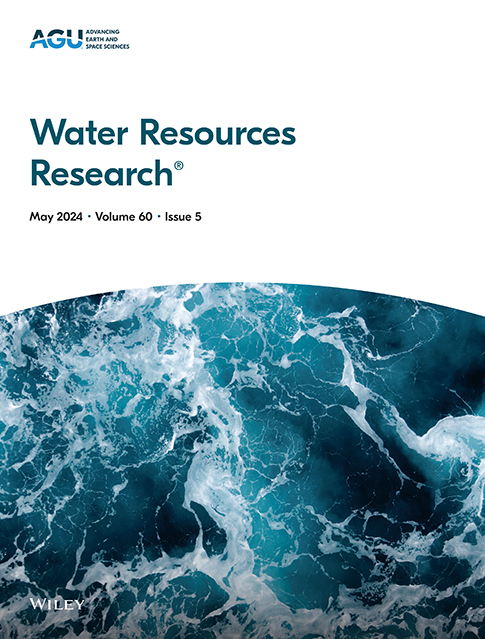Monthly Crop Water Consumption of Irrigated Crops in the United States From 1981 to 2019
IF 4.6
1区 地球科学
Q2 ENVIRONMENTAL SCIENCES
引用次数: 0
Abstract
Irrigated agriculture depends on surface water and groundwater, but we do not have a clear picture of how much water is consumed from these sources by different crops across the US over time. Current estimates of crop water consumption are insufficient in providing the spatial granularity and temporal depth required for comprehensive long-term analysis. To fill this data gap, we utilized crop growth models to quantify the monthly crop water consumption - distinguishing between rainwater, surface water, and groundwater - of the 30 most widely irrigated crops in the US from 1981 to 2019 at 2.5 arc min. These 30 crops represent approximately 95% of US irrigated cropland. We found that the average annual total crop water consumption for these 30 irrigated crops in the US was 154.2 km3, 70% of which was from irrigation. Corn and alfalfa accounted for approximately 16.7 and 24.8 km3 of average annual blue crop water consumption, respectively, which is nearly two-fifths of the blue crop water consumed in the US. Surface water consumption decreased by 41.2%, while groundwater consumption increased by 6.8%, resulting in a 17.3% decline in blue water consumption between 1981 and 2019. We find good agreement between our results and existing modeled evapotranspiration (ET) products, remotely sensed ET estimates (OpenET), and water use data from the US Geological Survey and US Department of Agriculture. Our data set and model can help assess the impact of irrigation practices and water scarcity on crop production and sustainability.灌溉农业依赖于地表水和地下水,但我们并不清楚美国不同作物长期以来从这些水源消耗了多少水。目前对作物耗水量的估算不足以提供全面长期分析所需的空间粒度和时间深度。为了填补这一数据空白,我们利用作物生长模型对美国 1981 年至 2019 年期间灌溉范围最广的 30 种作物的月度作物耗水量(区分雨水、地表水和地下水)进行了 2.5 弧分的量化。这 30 种作物约占美国灌溉耕地的 95%。我们发现,美国这 30 种灌溉作物的年平均总耗水量为 154.2 立方公里,其中 70% 来自灌溉。玉米和紫花苜蓿的年均耗水量分别约为 16.7 千立方米和 24.8 千立方米,占美国蓝色作物耗水量的近五分之二。地表水消耗量减少了 41.2%,而地下水消耗量增加了 6.8%,导致 1981 年至 2019 年间蓝色水消耗量下降了 17.3%。我们发现,我们的结果与现有的模型蒸散(ET)产品、遥感蒸散估算(OpenET)以及美国地质调查局和美国农业部的用水数据之间存在良好的一致性。我们的数据集和模型有助于评估灌溉方法和水资源短缺对作物生产和可持续性的影响。
本文章由计算机程序翻译,如有差异,请以英文原文为准。
求助全文
约1分钟内获得全文
求助全文
来源期刊

Water Resources Research
环境科学-湖沼学
CiteScore
8.80
自引率
13.00%
发文量
599
审稿时长
3.5 months
期刊介绍:
Water Resources Research (WRR) is an interdisciplinary journal that focuses on hydrology and water resources. It publishes original research in the natural and social sciences of water. It emphasizes the role of water in the Earth system, including physical, chemical, biological, and ecological processes in water resources research and management, including social, policy, and public health implications. It encompasses observational, experimental, theoretical, analytical, numerical, and data-driven approaches that advance the science of water and its management. Submissions are evaluated for their novelty, accuracy, significance, and broader implications of the findings.
 求助内容:
求助内容: 应助结果提醒方式:
应助结果提醒方式:


